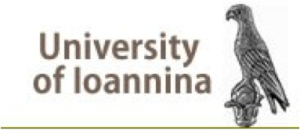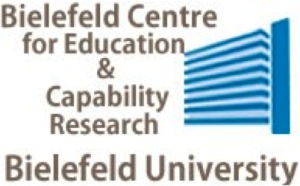…-oriented and functionalist approach to development; the attention to the “common good”; the rejection of an individualistic and “privatistic” vision of knowledge; the defense of the freedom’s spheres, whose removal would make life unworthy of human dignity. Culture of sustainability and Education are therefore the same thing. Educational processes should be oriented towards the formation of a civil awareness and towards the need to counter the ca…
Search Results for: Pharmacy Online ⭐ www.pills2sale.com ⭐ Buy Tamsulosin Over The Counter - Where To Buy Tamsulosin
-
-
National seminar “Actuality of the capability approach in Europe and sustainability scenarios”
-
Adamson, Laela (2019). 'Language of instruction: a question of disconnected capabilities' Paper presented at the annual conference of the HDCA 2019, London, UK.
-
2014 HDCA conference – Athens, Greece
The 2014 HDCA conference will be hosted jointly by the University of Ioannina and the Bielefeld Centre for Education and Capability Research.
The 2014 HDCA Program Committee cordially invites scholars, government policy makers, practitioners and other interested parties from all over the world to participate in the 2014 HDCA conference. Original empirical research, theoretical issues, case-studies or reports of experiences, or findings from major research projects, and book panels relevant to the 2014 theme, Human Development in Times of Crisis, or more broadly related to human development/capabilities approach will be presented.
-
Hart, Sarah M. (1); Hill, Mary F. (2); Gaffney, Janet S. (2) (2020). 'Transition with Dignity: Connecting individuals with significant disabilities with their exit from school in Aotearoa New Zealand' Paper presented at the annual conference of the HDCA 2020.
-
Veneti, Anastasia; Poulakidakos, Stamatis; Karadimitriou, Achilleas (2014). 'Operationalising Sen's ideas on the visual representation of social movements by the media' Paper presented at the annual conference of the HDCA, 2-5 September 2014, Athens, Greece.
-
The Economy of Francesco: Young People, A Commitment, The Future
…NOVEMBER, 19: https://www.francescoeconomy.org/live-streaming/nov-19/ NOVEMBER, 20: https://www.francescoeconomy.org/live-streaming/nov-20/ NOVEMBER, 21: https://www.francescoeconomy.org/live-streaming/nov-21/ If you’re a VILLAGER, log in now to the VILLAGES PARTICIPANTS AREA to find some restricted content….
-
1) Abbas, A., Khan, S., Hussain, N., Hanjra, M. A. and Akbar, S. (2013). Characterizing soil salinity in irrigated agriculture using a remote sensing approach’. Physics and Chemistry of the Earth, 55, pp. 43-52. 2) Anderson, J.R., Hardy, E.E., Roach, J.T., and Witmer, R.E., (1976); A Land Use and Land Cover Classification System for Use with Remote Sensor Data, United States Government Printing Office, Vvashington, V 1, pp. 1-27. 3) Barnsley, M. J., & Barr, S. L. (1996). Inferring urban land use from satellite sensor images using kernel based spatial reclassification. Photogramm Eng Remote Sensing, 62(8), 949–958. 4) Brahabhatt, V.S., Dalwadi, G.B., Chhabra, S.B., Ray, S.S., & Dadhwal, V.K., 2000. Landuse/land cover changes mapping in Mahi canal command area, Gujarat, using multitemporal satellite data, J.Indian Soc. Remote Sensing. 28(4), pp 221-232. 5) David,K., Yetta, G., Agung, F., Sharon, H.,& Alison, C.(2016). Land use planning for disaster risk reduction and climate change adaptation: Operationalizing policy and legislation at local levels. International Journal of Disaster Resilience in the Built Environment, 7(2), 158–172. 6) DCHB (District census Handbook) http://censusindia.gov.in/2011census/dchb/DCHB_A/19/1917_PART_A_DCHB_SOUTH%20TWENTY%20FOUR%20PARGANAS.pdf 7) Diallo, Y., Hu, G., & Wen, X. (2009). Applications of remote sensing in land use/land cover change detection in Puer and Simao Counties, Yunnan Province. Journal of American Science, 5(4), 157–166. 8) Duke, N.C., Meynecke, J.O., Dittmann, S., Ellison, A.M., Anger, K., Berger, U. (2007) “A World Without Mangroves?” Science, 317, 41–42. 9) Erener, A., Du ¨zgu ¨n, S., & Yalciner, A. C. (2012). Evaluating land use/cover change with temporal satellite data and information systems. Procedia Technology, 1, 385–389. 10) Erener, A., Du ¨zgu ¨n, S., & Yalciner, A. C. (2012). Evaluating land use/cover change with temporal satellite data and information systems. Procedia Technology, 1, 385–389. 11) Foody, G. M. (2002). Status of land cover classification accuracy assessment. Remote Sensing of Environment, 80(1), 185–201. 12) Friess, A.D., Scales, I. R., Glass, L., and Ravaoarinorotsihoarana, L., (2016) “Rural livelihoods and mangrove degradation in south-west Madagascar: lime production as an emerging threat”, Fauna & Flora International, pp-1-5. 13) Gao, Y., & Zhang, W. (2009). LULC classification and topographic correction of Landsat-7 ETM ? imagery in the Yangjia River Watershed: The influence of DEM resolution. Sensors, 9(3), 1980– 1995. 14) Gautam, N.C.,& Narayanan, L.R.A., 1983. Landsat MSS data for land use/land cover inventory and mapping: A case study of Andhra Pradesh, J.IndianSoc, Remote Sensing, 11(3), pp 15-28. 15) Giri, C. & Muhlhausen, J. (2008) “Mangrove Forest Distribution Sand Dynamics In Madagascar (1975 – 2005)”, Sensors, vol-8, pp.2104 –2117. 16) Guler, M., Yomralıoglu, T., & Reis, S. (2007). Using landsat data to determine land use/land cover changes in Samsun, Turkey. Environmental Monitoring and Assessment, 127(1–3), 155–167. 17) Guler, M., Yomralıoglu, T., & Reis, S. (2007). Using landsat data to determine land use/land cover changes in Samsun, Turkey. Environmental Monitoring and Assessment, 127(1–3), 155–167. 18) Gumma, M. K., Thenkabail, P. S., Hideto, F., Nelson, A., Dheeravath, V., Busia, D., et al. (2011). Mapping irrigated areas of Ghana using fusion of 30 m and 250 m resolution remote-sensing data. Remote Sensing, 3(4), 816–835. 19) Hegazy, I. R., and Kaloop, M. R. (2015). Monitoring urban growth and land use change detection with GIS and remote sensing techniques in Daqahlia governorate Egypt. International Journal of Sustainable Built Environment, 4(1), 117–124. 20) Helmer, E. H., Brown, S., & Cohen, W. B. (2000). Mapping montane tropical forest successional stage and land use with multi-date Landsat imagery. International Journal of Remote Sensing, 21(11), 2163–2183. 21) Herold, M., Scepan, J., & Clarke, K. C. (2002). The use of remote sensing and landscape-metrics to describe structures and changes in urban land uses. Environment and Planning A, 34(8), 1443– 1458. 22) Jain, S.K., 1992. Land use mapping of Tawi catchment using satellite data. Report No.CS72, National Institute of Hydrology, Roorkee, 52. 23) Jayakumar, S., and Arockiasamy, D. (2003), ‘Land use land cover mapping and change detection in part of Eastern Ghats of Tamil Nadu using remote sensing and GIS’, Journal of Indian Society of Remote Sensing 31, 251–260. 24) Jensen, J. R. (2007). Remote sensing of the environment (2nd ed.). Upper Saddle River: Pearson Prentice Hall. 25) Ji, W., Ma, J., Twibell, R. W., & Underhill, K. (2005). Characterizing urban sprawl using multistage remote sensing images and landscape metrics. Computers, Environment and Urban Systems, 30(2006), 861–879.3 26) Jia, K., Wei, X., Gu, X., Yao, Y., Xie, X., & Li, B. (2014). Land cover classification using Landsat 8 Operational Land Imager data in Beijing, China. Geocarto International, 29(8), 941–951. 27) Kumar, R. (2016). Flood hazard assessment of 2014 floods in Sonawari sub-district of Bandipore district (Jammu & Kashmir): An application of geoinformatics. Remote Sensing Applications: Society and Environment, 4, 188–203. 28) Lambin, E. F., Turner, B. L., Geist, H. J., Agbola, S. B., Angelsen, A., Bruce, J. W., et al. (2001). The causes of land-use and land-cover change: Moving beyond the myths. Global Environmental Change, 11(2), 261–269. 29) Liu, T., and Yang, X. (2015). Monitoringland changesin anurban area using satellite imagery, GIS and landscape metrics. Applied Geography, 56, 42–54. 30) Loveland T. R., & Acevedo W. (2006) Land cover change in the Eastern United States, US Geological survey. 31) Lu, D., & Weng, Q. (2004). Spectral Mixture Analysis of the Urban Landscape in Indianapolis with Landsat ETM ? Imagery. Photogrammetric Engineering and Remote Sensing, 70(9), 1053– 1062. 32) Lu, D., Hetrick, S., Moran, E., & Li, G. (2012). Application of time series landsat images to examining land-use/landcover dynamic change. Photogrammetric Engineering and Remote Sensing, 78(7), 747–755. 33) Malakar, K.D., (2020). The Mangrove: Future of the Global seacoast. Globe edit, Germany, ISBN: 978-620-0-60757-7. 34) Map Library (MAP) (2000) (http://www.maplibrary.org/library/stacks/Africa/Madagascar/Mahajanga/Mahajanga%20Urban/index.htm) 35) Nelson, F. (1983). Detecting forest canopy change due to insect activity using Landsat MSS. Photogrammetric Engineering and Remote Sensing, 49(9), 1303–1314. 36) Ojima, D. S., Galvin, K. A., & Turner, B. L. (1994). The global impact of land-use change. BioScience, 44(5), 300. 37) Quintas-Soriano, C., Castro, A. J., Castro, H., & Garcı ´a-Llorente, M. (2016). Impacts of land use change on ecosystem services and implicationsfor human well-being in Spanish drylands. Land Use Policy, 54, 534–548. 38) Seto, K. C., & Kaufmann, R. K. (2005). Using logit models to classify land cover and land-cover change from Landsat Thematic Mapper. International Journal of Remote Sensing, 26(3), 563–577. 39) Shah, S. A. (2012). Use of geographic information system in land use studies: A micro level analysis. European Journal of Applied Sciences, 4(3), 123–128. 40) Sharma, K.R., Jain, S.C., &Garg, R.K, 1984. Monitoring land use and land cover changes using landsat imager, J. Indian Soc. Remote Sensing 12(2), pp 115-121. 41) Singh, A. (1989). Review article digital change detection techniques using remotely-sensed data. International Journal of Remote Sensing, 10(6), 989–1003. 42) Turner, B. L., Moss, R. H., & Skole, D. L. (1993). Relating land use and global land-cover change. In Unknown host publication title. International geosphere-biosphere programme, Stockholm; Report, 24/human dimensions of global environmental change programme, Barcelona; Report 5. 43) UNEP (2014) “The Importance of Mangroves: A Call to Action”, United Nations Environment Programme– World Conservation Monitoring Centre, Cambridge, UK. 44) World Conservation Monitoring Centre (WCMC) https://www.unep-wcmc.org/ 45) Yang, X. (2002). Satellite monitoring of urban spatial growth in the Atlanta metropolitan area. Photogrammetric Engineering and Remote Sensing, 68(7), 725–734. 46) Yang, X., & Liu, Z. (2005). Using satellite imagery and GIS for land-use and land-cover change mapping in an estuarine watershed. International Journal of Remote Sensing, 26(23), 5275–5296.
-
Call for Abstracts: International Indigenous Development Research Conference 2014
…bridge’ between indigenous development research and positive change in our communities? How can we ensure that the outcomes and benefits of our research do get into the hands of those who can make change in our communities? How is positive change achieved through our research? Submitting an Abstract Please submit an Abstract (max 200 words) for either an oral or poster presentation by completing the Abstract Submission Form at http://www.indigenou…
-
EXTENDED DEADLINE: VII Conference of the Latin American and Caribbean Association for Human Development and the Capabilities Approach (ALCADECA)
…ease visit the website of the event (under construction): www.udlap.mx/alcadeca2019 Organising Committee: • Oscar Garza (UDLAP, México) • Viviana Ramírez (UDLAP, México) • Teresa Herrera-Nebel (UPAEP) Academic Committee: • Javier Iguiñiz • Graciela Tonon • Andrea Vigorito • Izete Pengo Bagolin • Silvana Vargas • Séverine Deneulin…


